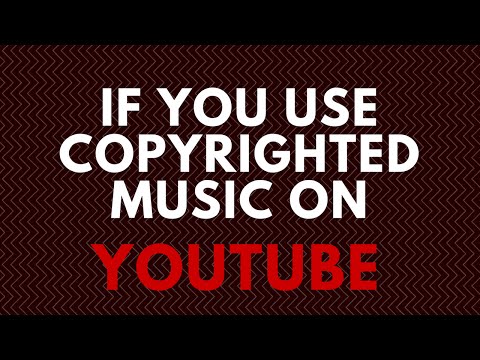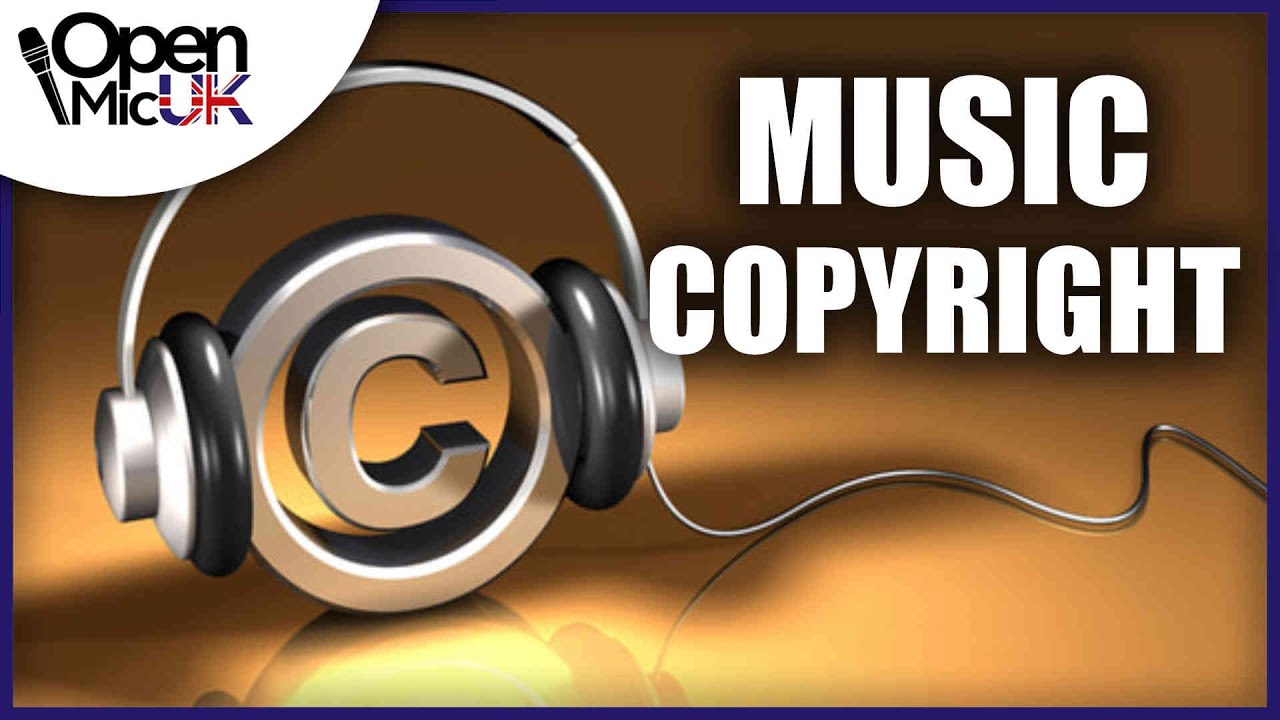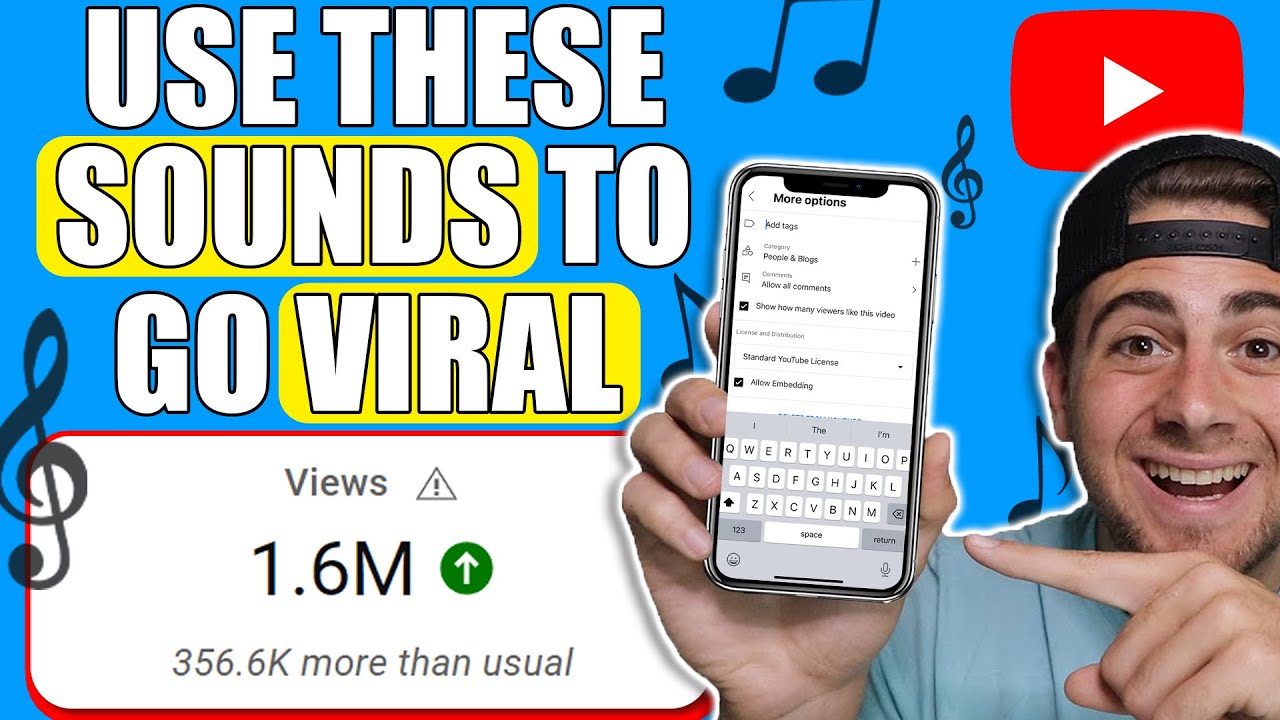In today's digital landscape, YouTube Shorts has emerged as a popular platform for creators to share quick, engaging videos. With its bite-sized format, creators can easily capture attention, express creativity, and connect with audiences. But one question many have is about using music in these shorts. It’s tempting to grab your favorite song and add it to your clips, but you need to be cautious. Navigating music usage in YouTube Shorts isn’t just about creativity; it’s about staying within the boundaries of copyright law. Let’s dive into the essentials!
The Importance of Copyright in Music

Copyright is a legal framework designed to protect the original works of creators, including musicians. When it comes to music, copyright gives the creators or copyright holders exclusive rights to use, distribute, and monetize their work. In the context of YouTube Shorts, understanding copyright is essential for anyone wanting to incorporate music into their videos. Here’s why:
- Preservation of Artists’ Rights: Copyright ensures that artists receive credit and compensation for their work. Without copyright, songs could be used freely without any acknowledgment or remuneration to the creators.
- Legal Protection: Copyright laws protect artists from unauthorized use of their music. If you use music without permission, you’re not just risking a strike on your YouTube account; you might also be open to legal action from copyright holders.
- Monetization: For creators hoping to monetize their content, using copyrighted music can complicate things. Many times, videos with copyrighted music can be demonetized, meaning you can't earn money from views.
So, what happens if you use music without the proper rights? Here’s a rundown of possible consequences:
| Consequences | Description |
|---|---|
| Video Removal | Your video can be taken down by YouTube, costing you precious engagement. |
| Strikes | Repeated copyright infringements can lead to strikes on your account, which may affect your channel's standing. |
| Legal Issues | In some cases, copyright owners might pursue legal action, leading to fines or worse. |
That said, the landscape is evolving. Many platforms, including YouTube, are creating partnerships with music labels to facilitate the use of popular tracks legally. YouTube’s Audio Library offers an extensive range of music that users can utilize safely, so exploring these options is highly beneficial.
By respecting copyright and choosing music wisely, you cultivate a fair environment for both creators and artists. It doesn't just protect you; it helps promote and respect the creative community. Remember, the rights of musicians matter, and by adhering to copyright laws, you're actively participating in an ecosystem that values creativity and originality.
Also Read This: Exporting YouTube Shorts: Common Errors and Fixes
3. Types of Music You Can Use in YouTube Shorts

When creating YouTube Shorts, one of the most critical aspects to consider is the type of music you use. Music can elevate your content, making it more engaging and enjoyable for your audience. However, it’s essential to choose tracks that won’t land you in copyright trouble. Here’s a breakdown of the different types of music you can safely use in your Shorts:
- Royalty-Free Music: This is music that you can use without paying royalties each time you play it. Many platforms offer royalty-free tracks for a one-time fee or even for free under certain conditions. Be sure to read the licensing terms carefully!
- Creative Commons Music: Some artists release their music under Creative Commons licenses, allowing others to use their work, often for free or with minimal restrictions. There are different types of Creative Commons licenses, so check for “Attribution” or “NonCommercial” terms that might apply.
- Music from YouTube’s Audio Library: YouTube provides a fantastic resource with its own Audio Library. You’ll find a plethora of free tracks and sound effects that you can use without worrying about copyright, as long as you adhere to their guidelines.
- Original Music: If you or someone you know is musically inclined, creating original music is one of the best ways to avoid copyright issues. It’s unique and personalized, giving your Shorts a distinctive flair!
- Licensed Music: If you have the budget, consider purchasing licenses for popular tracks through platforms that offer licensing agreements. This way, you can use mainstream music while ensuring you're on the right side of copyright laws.
In summary, while the world of music can be intricate and sometimes daunting due to copyright rules, there are plenty of options at your fingertips. As long as you acknowledge the rules and make informed choices, your YouTube Shorts can shine with the perfect soundtrack!
Also Read This: How to Install Garage Door Banner with String on YouTube: A Step-by-Step Guide
4. How to Find Copyright-Free Music for Your Shorts

Now that you know what types of music you can use in your YouTube Shorts, let’s dive into how to find copyright-free music. The good news is that there are tons of resources available, and some are even user-friendly!
- YouTube Audio Library: As mentioned earlier, this is one of the best places to start. It’s packed with a wide variety of music and sound effects, all free to use in your Shorts. Simply head over to the library, browse by genre or mood, and download the tracks you like.
- Free Music Archive (FMA): This is a treasure trove of music across various genres. The FMA offers tracks under different licenses, so be sure to filter your search for those labeled “public domain” or “Creative Commons.”
- SoundCloud: Many independent artists on SoundCloud share their music under Creative Commons licenses. You can find some unique sounds here, but always double-check the licensing to ensure you're compliant.
- Incompetech: Created by composer Kevin MacLeod, this site offers a variety of compositions that are free to use with attribution. His music is quite popular among content creators and can give your Shorts a professional sound without the hefty price tag.
- Jamendo: This platform allows creators to access a broad range of music while supporting independent artists. Music on Jamendo is often free for personal use, but check the licensing agreements for commercial applications.
Finding the right soundtrack doesn't have to be a complicated process. By utilizing these resources, you can enhance your YouTube Shorts with great music legally and ethically. And remember, always check the licensing agreements before using any music to ensure you’re in the clear!
Also Read This: How to Turn Off Captions on YouTube TV for a Clearer Viewing Experience
5. Using Popular Music in YouTube Shorts: What You Need to Know
So, you’re ready to spice up your YouTube Shorts with some popular music, but wait a minute! Before you hit that upload button, there are a few crucial things you need to know about using popular tracks in your videos.
First and foremost, *copyright laws* are in play here. Not all music is free for you to use, even if you’re just creating a fun short for your friends or followers. Here's a quick rundown:
- Copyrighted Music: Most popular songs are copyrighted, meaning you can’t use them without permission from the copyright holder.
- Licensing: Occasionally, platforms like YouTube negotiate licenses with music labels allowing users to use certain tracks, but the availability can vary.
- Royalty-Free Music: Consider using royalty-free music if you want to avoid potential copyright issues. There are many platforms offering great tracks for free or for a fee.
Now, you might be wondering how to find out what music is available for your Shorts. YouTube has a library called the YouTube Audio Library, where you can discover music that's safe to use. Here’s how:
- Go to the YouTube Studio.
- Click on "Audio Library" in the left sidebar.
- Browse or search for music by genre, mood, or instrument.
When using music, always check if there are any specific requirements or attribution needed. Generally, it's best to steer clear of popular mainstream tracks unless you’ve got permission or unless you’re seeing a clear indicator that it’s available for use. Remember that your creativity can shine even with lesser-known tracks!
Also Read This: How to Download YouTube Video Transcripts: Simple Methods for Saving Text
6. Potential Consequences of Copyright Violations
Playing fast and loose with copyright rules might seem tempting, especially when it comes to using that catchy tune that just makes your Shorts pop. However, it’s essential to understand the potential consequences of copyright violations.
Here are some outcomes you may face if you decide to use copyrighted music without permission:
- Content Removal: Your video might get taken down by YouTube if it detects a copyright infringement. This can happen fairly quickly and often without warning.
- Strikes Against Your Channel: Accumulating copyright strikes can lead to severe consequences, including channel termination if you receive too many within a specific time period.
- Monetization Issues: If your channel is monetized, using copyrighted music can lead to revenue loss, as the copyright holder may claim the ad revenue generated from your video.
- Legal Action: In extreme cases, copyright holders may pursue legal action, which can lead to hefty fines or other legal troubles.
To avoid all of these headaches, always do your homework. When in doubt, err on the side of caution. It’s better to spend a bit of time searching for the right track than to face the consequences of a copyright violation.
To summarize, using popular music can be captivating but comes with certain risks. By understanding the rules and knowing your options, you can create amazing content while staying on the right side of copyright law!
Also Read This: Which YouTuber Am I? Take the Quiz to Find Your YouTube Personality
7. Best Practices for Complying with Copyright Laws
When it comes to using music in your YouTube Shorts, knowing the rules can save you a lot of headaches down the road. Fortunately, there are some best practices that can guide you in staying on the right side of copyright laws.
1. Use Royalty-Free Music: One of the safest options is to use royalty-free music. This type of music is available for a one-time fee or even for free. Just make sure to read the licensing agreement, as some tracks may require attribution or have restrictions on commercial use.
2. Leverage YouTube's Audio Library: YouTube offers a vast library of music and sound effects that are completely free to use in your videos. The best part? You can filter tracks by genre, mood, instrument, and even duration, making it super easy to find the perfect fit for your content.
3. Seek Permission: If you have your heart set on a specific song, don’t hesitate to seek permission from the copyright owner. This might involve reaching out to the artist, their label, or the publisher. While it might seem daunting, many artists appreciate the outreach and may grant permission.
4. Utilize Licensed Music Services: There are various platforms where you can pay to use copyrighted tracks legally. Services like Soundstripe or Artlist offer subscription-based access to vast music libraries—with tracks that come with a clear license for various uses.
5. Understand Fair Use: Familiarize yourself with the concept of fair use. In some cases, you may be able to use snippets of copyrighted music without permission, particularly for commentary, criticism, or education. However, fair use has its grey areas, so tread carefully, and consult a legal expert if you're unsure.
By following these best practices, you can significantly reduce the risk of copyright infringement and keep your channel thriving!
8. Conclusion: Choosing the Right Music for Your YouTube Shorts
In the bustling world of YouTube Shorts, the right music can elevate your content from good to unforgettable. Music isn't just an accessory; it sets the tone and enhances the emotions you want to convey. Here are some key takeaways for choosing the perfect track:
- Match the Mood: Whether you're aiming for something uplifting, dramatic, or comedic, make sure the music complements your content. Think about the feelings you want your viewers to experience.
- Consider Your Audience: The music you choose should resonate with your target audience. Young viewers may prefer trending pop songs, while a more mature crowd might appreciate jazz or classic rock.
- Keep It Short and Snappy: Since Shorts are all about brevity, selecting catchy, high-energy tracks that grab attention quickly is vital. Look for songs that don’t drag and keep the pacing energetic.
- Stay Informed About Licensing: As discussed, copyright laws can be complex. Stay informed about the latest rules and licensing options to avoid potential pitfalls.
- Try Different Genres: Don’t be afraid to experiment! A quirky or unexpected genre might be a fun way to stand out from the crowd, so don’t shy away from bending the norms.
Choosing the right music requires a thoughtful approach, but when done correctly, it can make your YouTube Shorts shine. By keeping copyright considerations in mind and using creative resources, you’ll be well on your way to producing captivating content that resonates with your viewers, all while keeping things legal and above board. Happy creating!
 admin
admin








